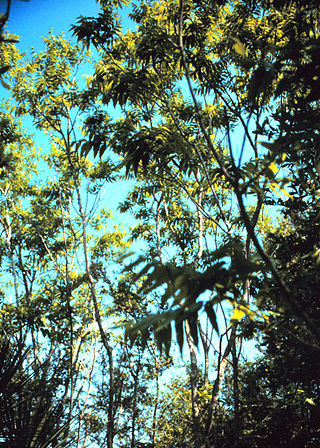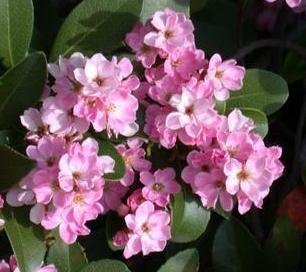
Flax, also known as common flax or linseed, is a flowering plant, Linum usitatissimum, in the family Linaceae. It is cultivated as a food and fiber crop in regions of the world with temperate climates. Textiles made from flax are known in English as linen and are traditionally used for bed sheets, underclothes, and table linen. Its oil is known as linseed oil. In addition to referring to the plant, the word "flax" may refer to the unspun fibers of the flax plant. The plant species is known only as a cultivated plant and appears to have been domesticated just once from the wild species Linum bienne, called pale flax. The plants called "flax" in New Zealand are, by contrast, members of the genus Phormium.

Floriography is a means of cryptological communication through the use or arrangement of flowers. Meaning has been attributed to flowers for thousands of years, and some form of floriography has been practiced in traditional cultures throughout Europe, Asia, and Africa. Plants and flowers are used as symbols in the Hebrew Bible, particularly of love and lovers in the Song of Songs, as an emblem for the Israelite people, and for the coming Messiah. "I am the flower of the field, and the lily of the valleys. As a lily among thrones, so is my long among the daughters.”

Cilappatikāram, also referred to as Silappathikaram or Silappatikaram, is the earliest Tamil epic. It is a poem of 5,730 lines in almost entirely akaval (aciriyam) meter. The epic is a tragic love story of an ordinary couple, Kannaki and her husband Kovalan. The Cilappatikaram has more ancient roots in the Tamil bardic tradition, as Kannaki and other characters of the story are mentioned or alluded to in the Sangam literature such as in the Naṟṟiṇai and later texts such as the Kovalam Katai. It is attributed to a prince-turned-monk Iḷaṅkõ Aṭikaḷ, and was probably composed in the 5th or 6th century CE.

Valley of Flowers National Park is an Indian national park which was established in 1982. It is located in Chamoli in the state of Uttarakhand and is known for its meadows of endemic alpine flowers and the variety of flora. This richly diverse area is also home to rare and endangered animals, including the Asiatic black bear, snow leopard, musk deer, brown bear, red fox and blue sheep. Birds found in the park include Himalayan monal pheasant and other high-altitude birds.

Sapindus is a genus of about thirteen species of shrubs and small trees in the lychee family, Sapindaceae and tribe Sapindeae. It is native to warm temperate to tropical regions of the world. The genus includes both deciduous and evergreen species. Members of the genus are commonly known as soapberries or soapnuts because the fruit pulp is used to make soap. The generic name is derived from the Latin words sapo, meaning "soap", and indicus, meaning "of India".

Yes! PreCure 5 is a Japanese anime series and the fourth installment in Izumi Todo's Pretty Cure metaseries produced by Toei Animation, featuring the third generation of Cures. The series aired on TV Asahi between February 2007 and January 2008 and received a sequel season, Yes! PreCure 5 GoGo!, which is the franchise's fifth installment and aired between February 2008 and January 2009. Both series were directed by Toshiaki Komura and written by Yoshimi Narita. The character designs were done by Toshie Kawamura, who would go on to work on the character designs for Smile PreCure! and Hug! Pretty Cure. An illustration book of her works was released on February 12, 2014. A manga adaptation was serialized in Kodansha's monthly Nakayoshi magazine. The series has butterflies as its main motif, while GoGo!'s main motif is roses. A sequel anime series focusing on the characters as adults premiered in October 2023.

The Datiscaceae are a family of dicotyledonous plants, containing two species of the genus Datisca. Two other genera, Octomeles and Tetrameles, are now classified in the family Tetramelaceae.

The genus Helwingia consists of shrubs or rarely small trees native to eastern Asia, the Himalayas, and northern Indochina. It is the only genus in the family Helwingiaceae.
Momal Rano or Mumal Rano is a romantic tale of Momal and Rano from the Sindhi folklore and Rajasthani folklore. It is a multifaceted story that entails adventure, magic, schemes, beauty, love, ordeals of separation, and above all romantic tragedy.
Beauty and Pock Face is a Chinese fairy tale collected by Wolfram Eberhard in Chinese Fairy Tales and Folk Tales.
"The Pretty Little Calf" is a Chinese fairy tale collected by Wolfram Eberhard in "Folktales of China". It is related to the theme of the calumniated wife and to the tale type ATU 707, "The Three Golden Children", of the international Aarne-Thompson-Uther Index, in that a woman gives birth to children of wondrous aspect, but jealous relatives conspire to separate them. Similar stories are attested in East Asian literature, specially Mongolian and Korean, wherein the boy is murdered, but is later reborn in the shape of a calf.

Rhaphiolepis indica, the Indian hawthorn, India hawthorn or Hong Kong hawthorn is an evergreen shrub in the family Rosaceae.

Cautleya is a small genus of perennial plants of the family Zingiberaceae, found in the eastern Himalayas through to China and Vietnam. It consists of two species of high-altitude tropical and temperate plants, native to cool forest areas – an unusual habitat for members of the Zingiberaceae. They are grown as ornamental flowering plants.
Saat Bhai Champa or Sat Bhai Chompa is a popular folk tale in the Bengal region in the eastern part of the Indian subcontinent. The story was first officially published by Dakshinaranjan Mitra Majumder in the book Thakurmar Jhuli in 1907. The introduction to Thakurmar Jhuli was written by Nobel-Laureate, Rabindranath Tagore. A more detailed version of the story was published by Bishnu Dey under the name "Sat Bhai Champa" in 1944.

Rubus ellipticus, commonly known as ainselu, golden evergreen raspberry, golden Himalayan raspberry, or yellow Himalayan raspberry, is an Asian species of thorny fruiting shrub in the rose family. It's native range stretches from the Indian subcontinent to southern China and Indochina and the Philippines.

Ipsea speciosa, the daffodil orchid, is a rare wild orchid found in the hills of Sri Lanka and southern India. It is a terrestrial herb with pseudobulbous stem. The lanceolate leaves of the plant are grass like and pointed at the end. Its large flowers appear from September to February, they are bright yellow and sweet-scented.
Nantong blue calico printing and dyeing has been practiced in most parts of Nantong City, Jiangsu Province, China, since the beginning of Qing dynasty. In modern times, blue calico is used to make daily clothes, mosquito nets, pillowcases, baggage cloth, etc.

Coriaria nepalensis is a shrub of the genus Coriaria. It grows in the foothills of the Himalayas. It blooms in spring and has bright yellow flowers and red fruits in summer.

Carex capillacea, common name yellowleaf sedge in Tasmania, is a species of sedge found in Assam, the far east of Russia, New Guinea, south east Australia, New Zealand, Malesia, China, Japan and India.
Fairer-than-a-Fairy is a literary fairy tale published anonymously in the 1718 fairy tale collection Nouveaux contes de fées. It is attributed to the Chevalier de Mailly. Andrew Lang included it in The Yellow Fairy Book.















